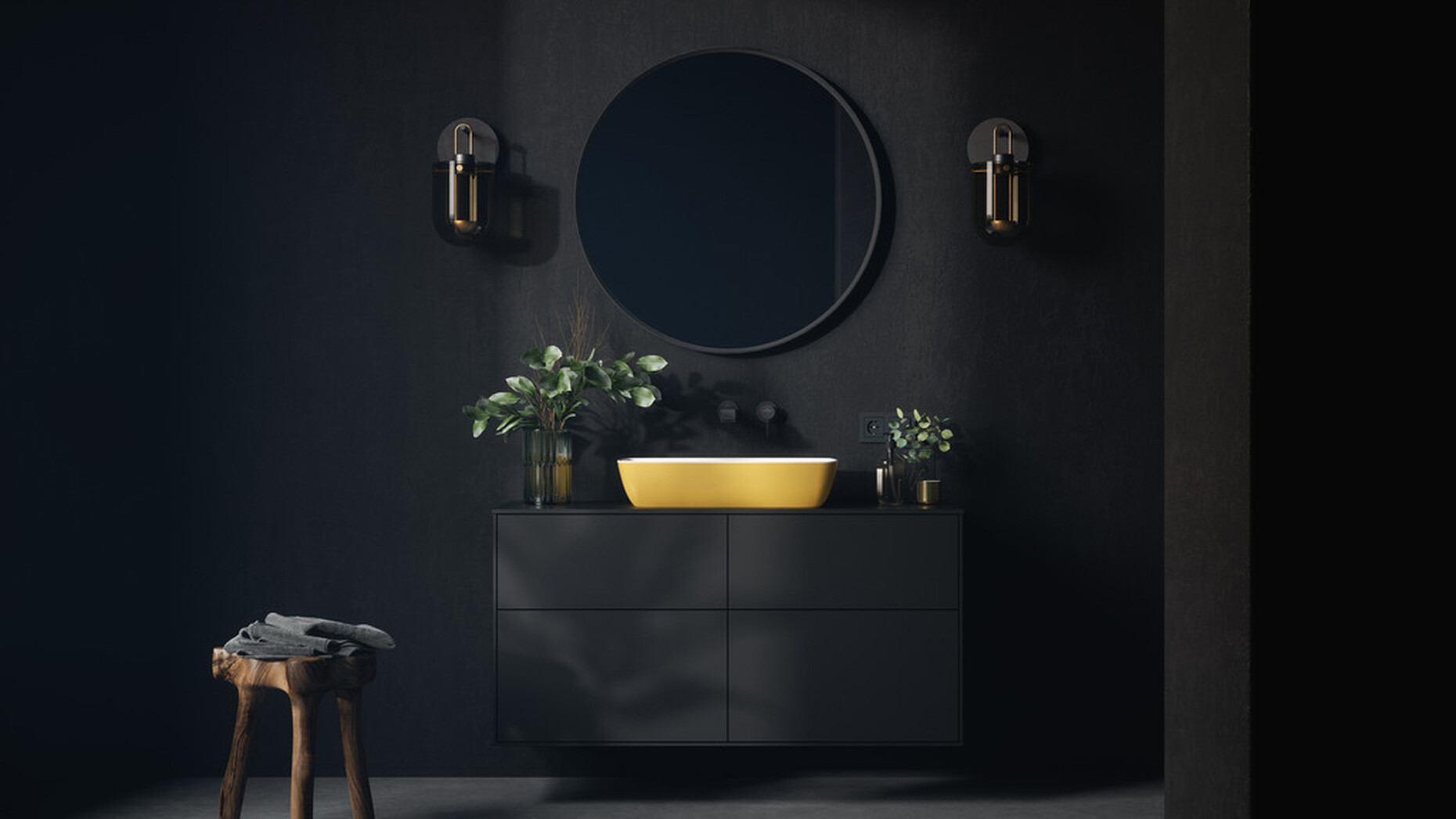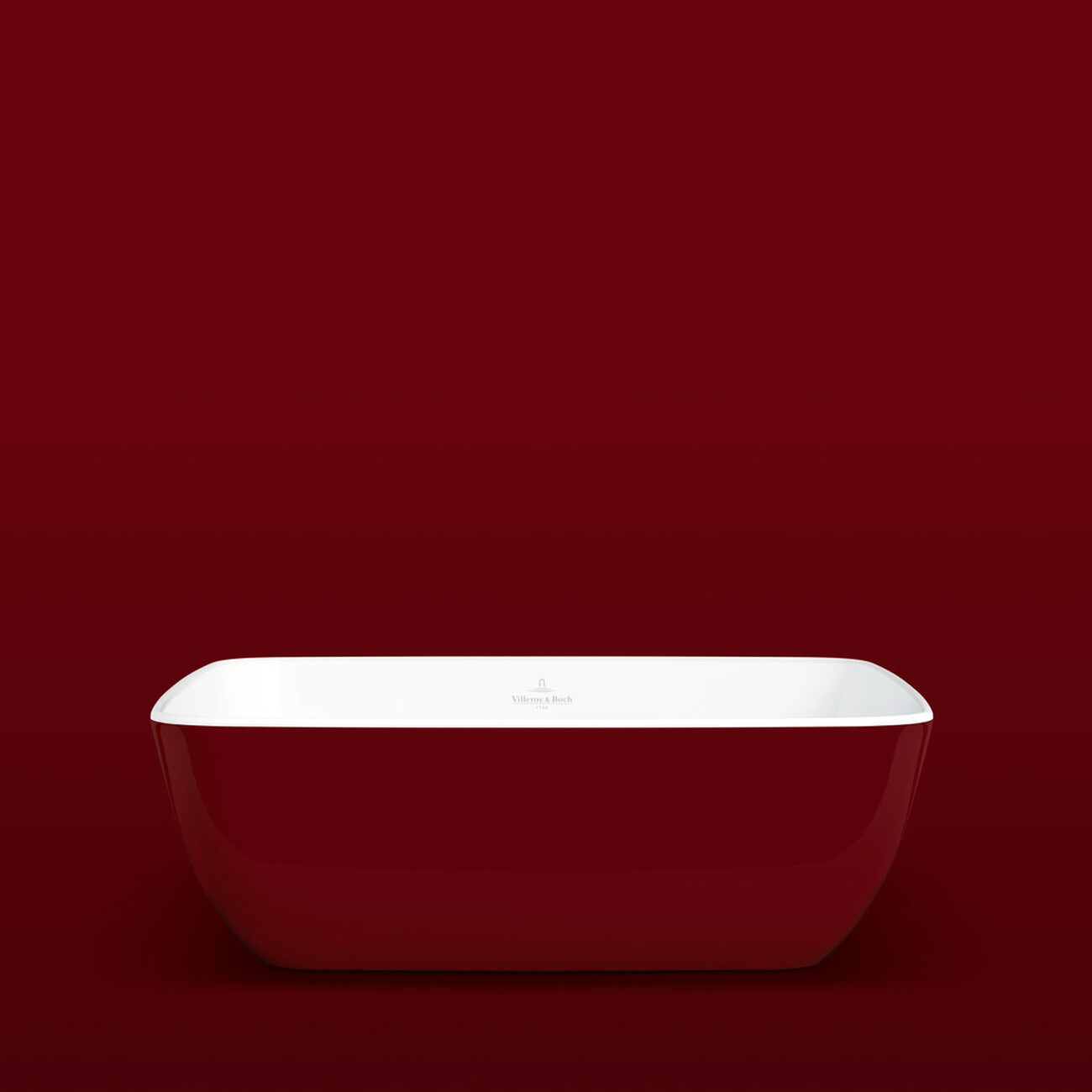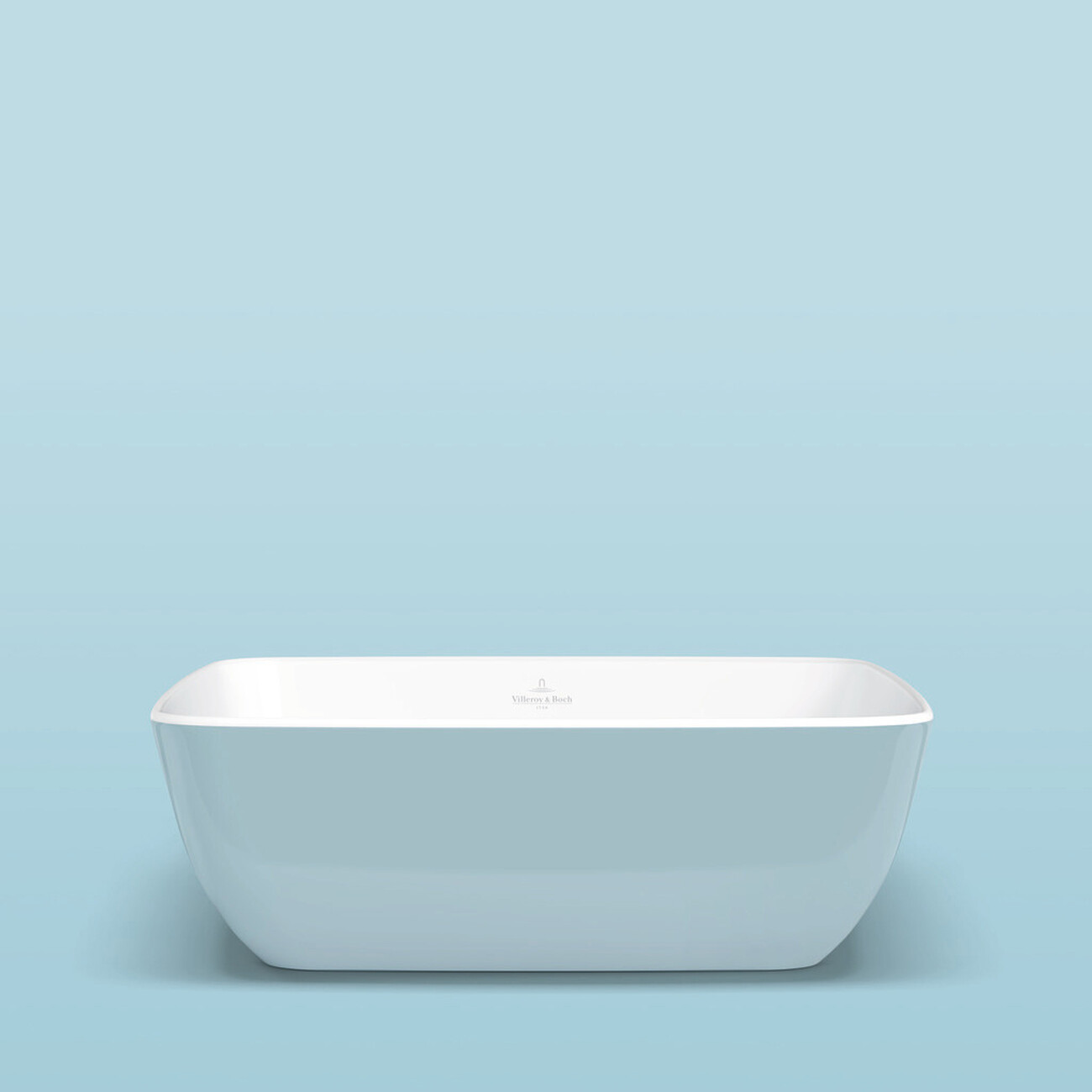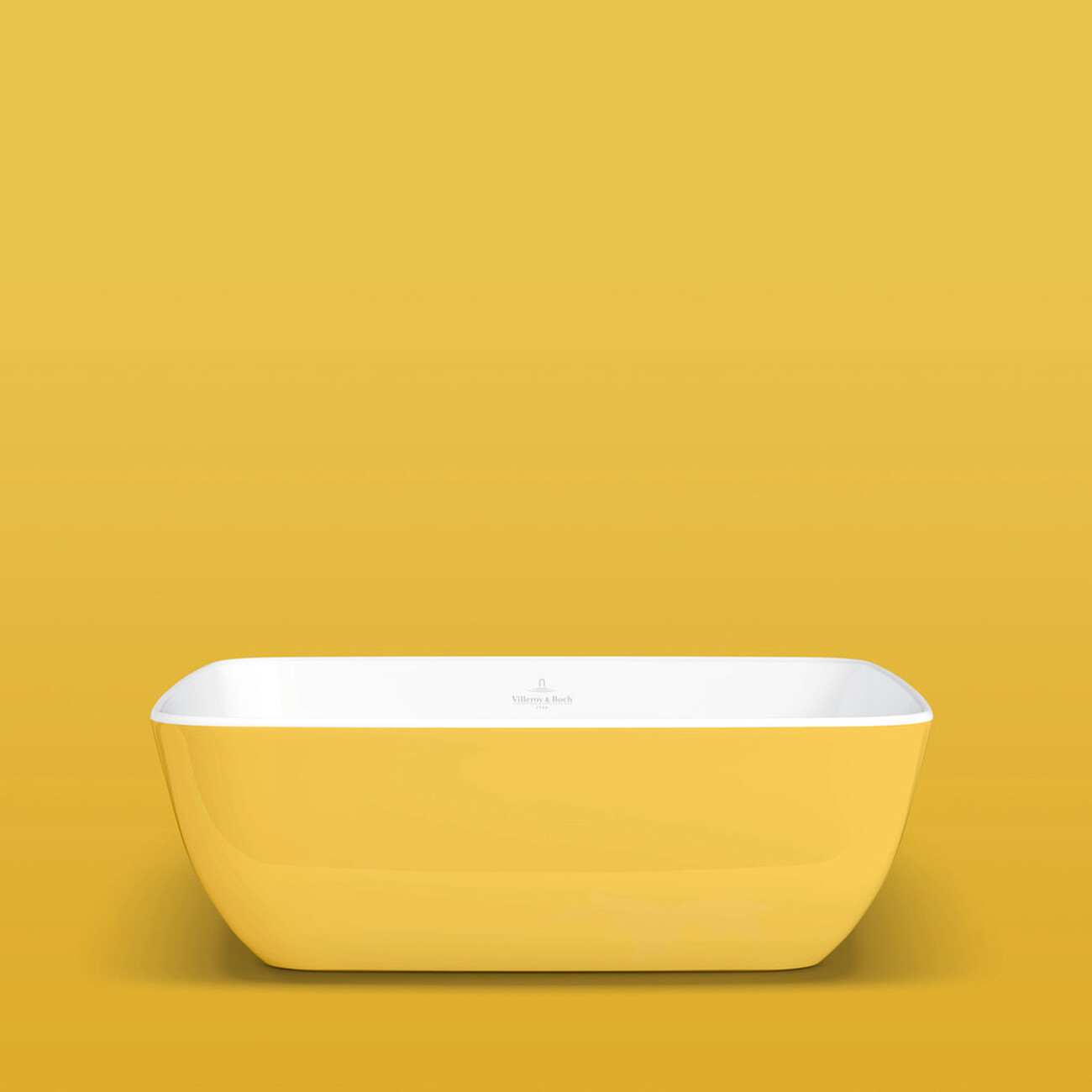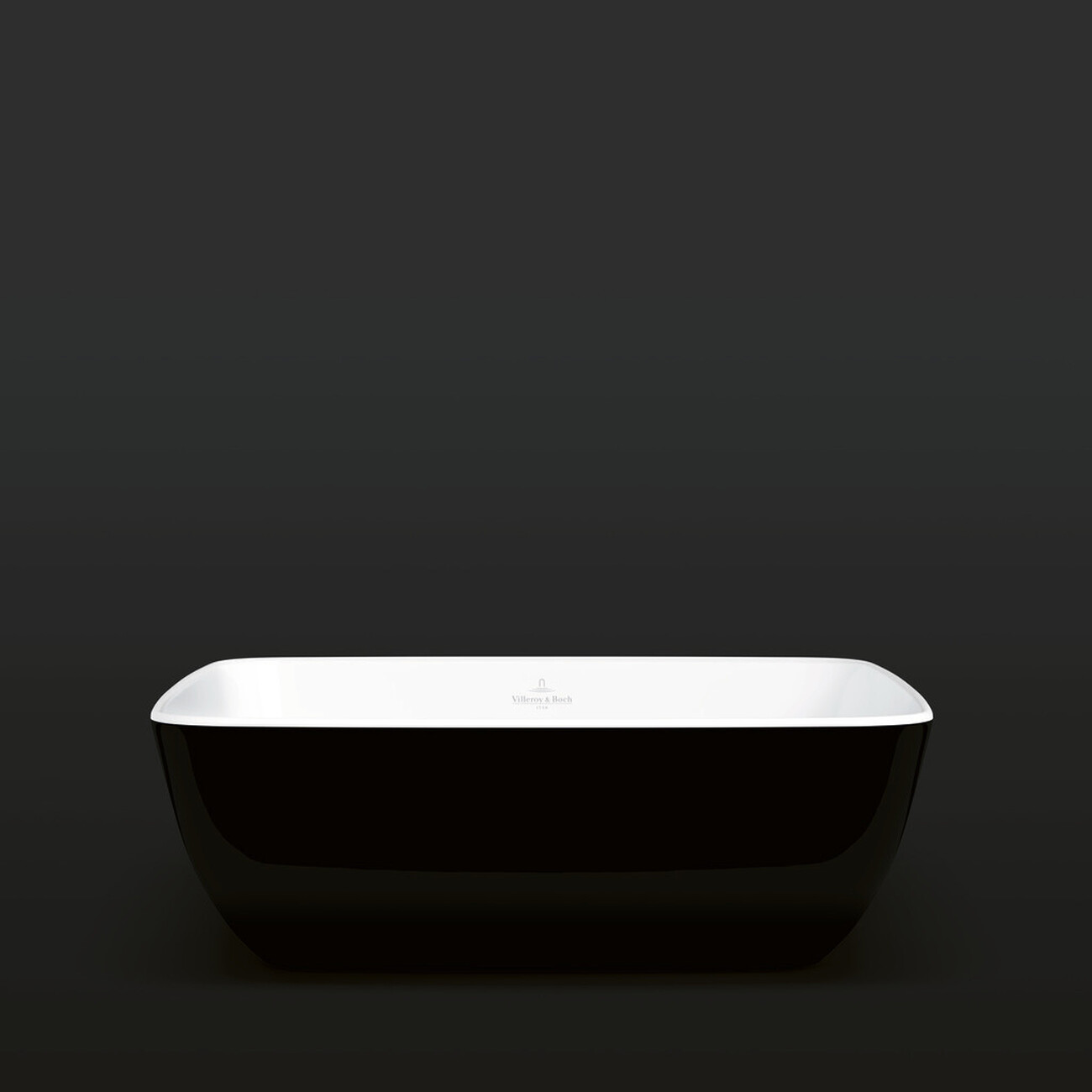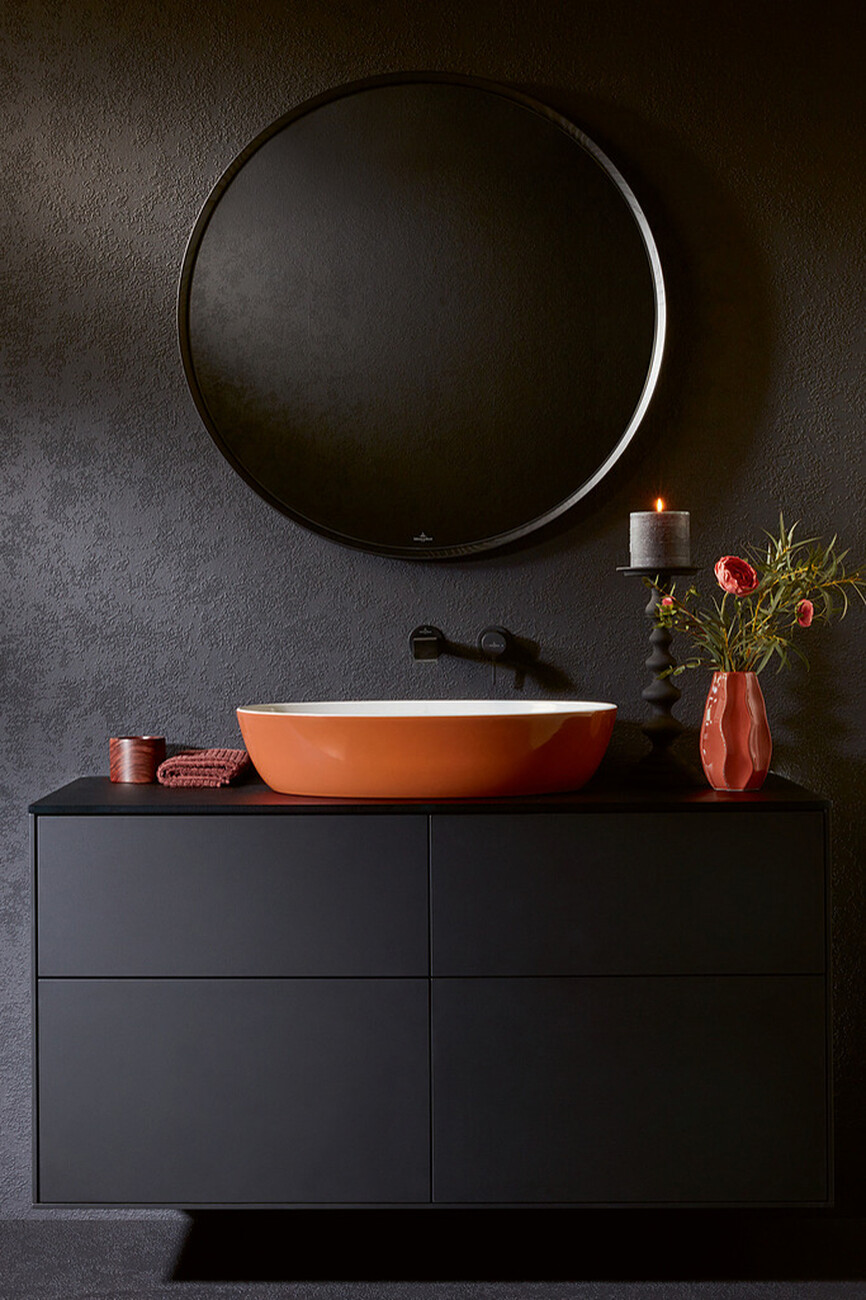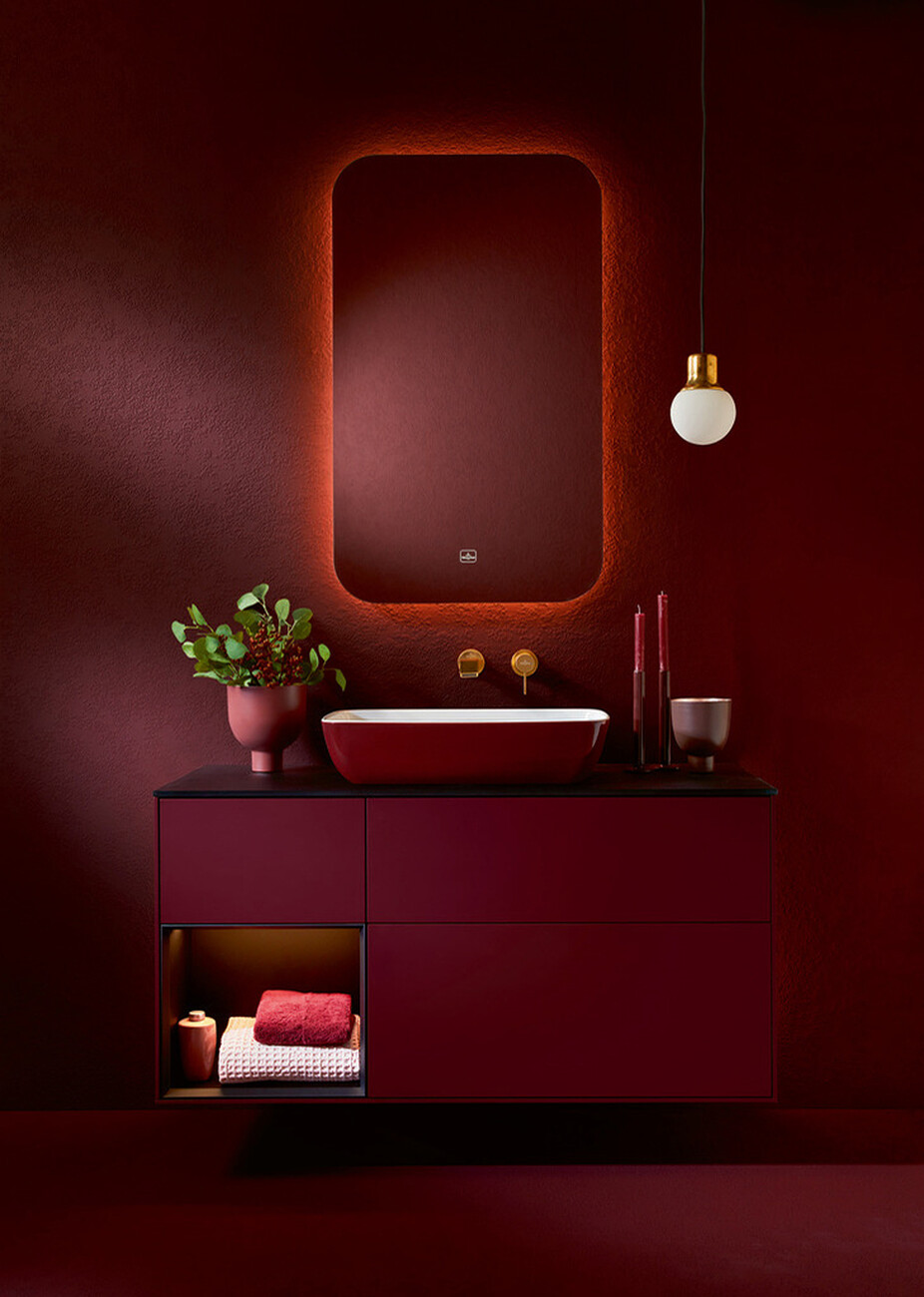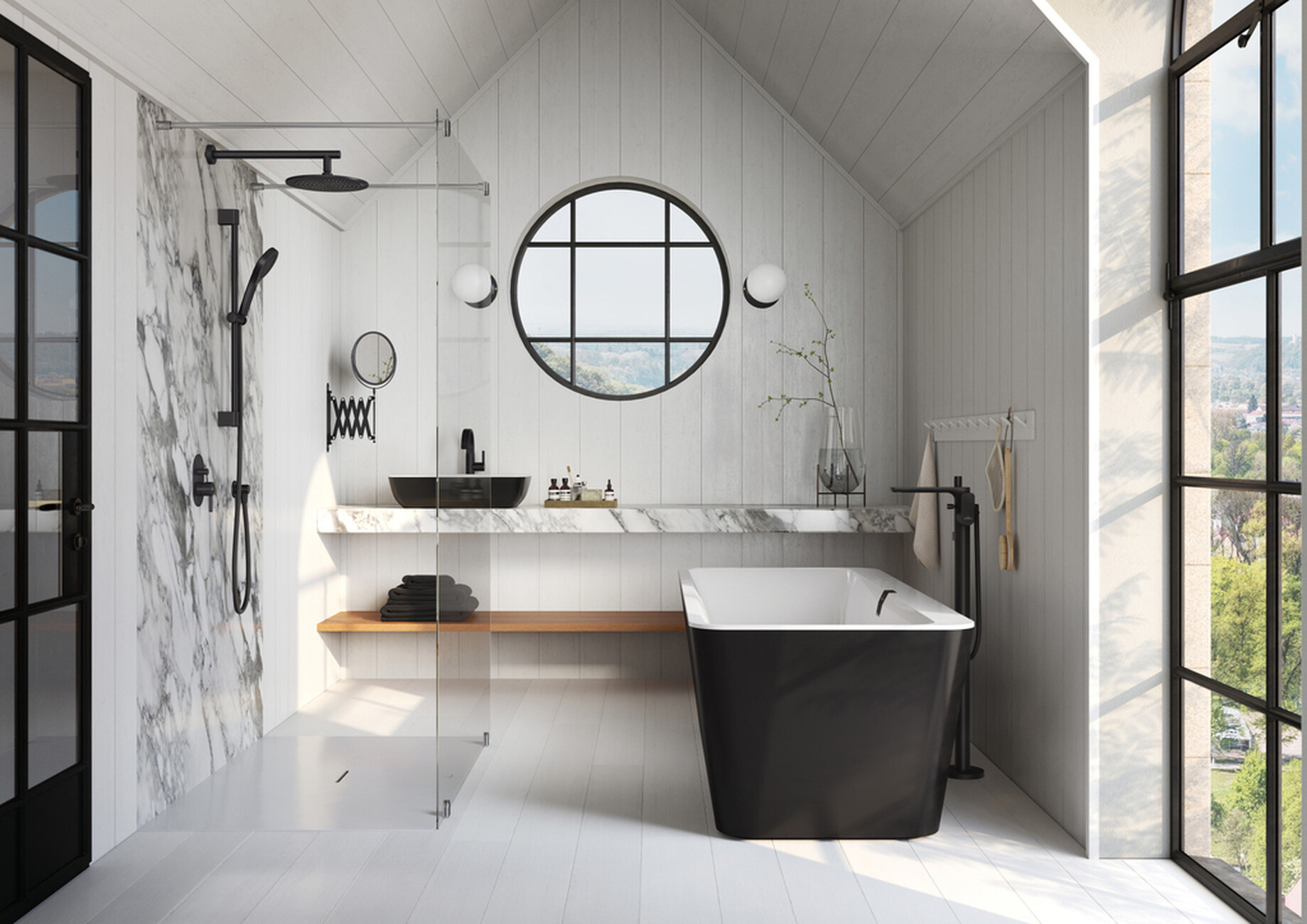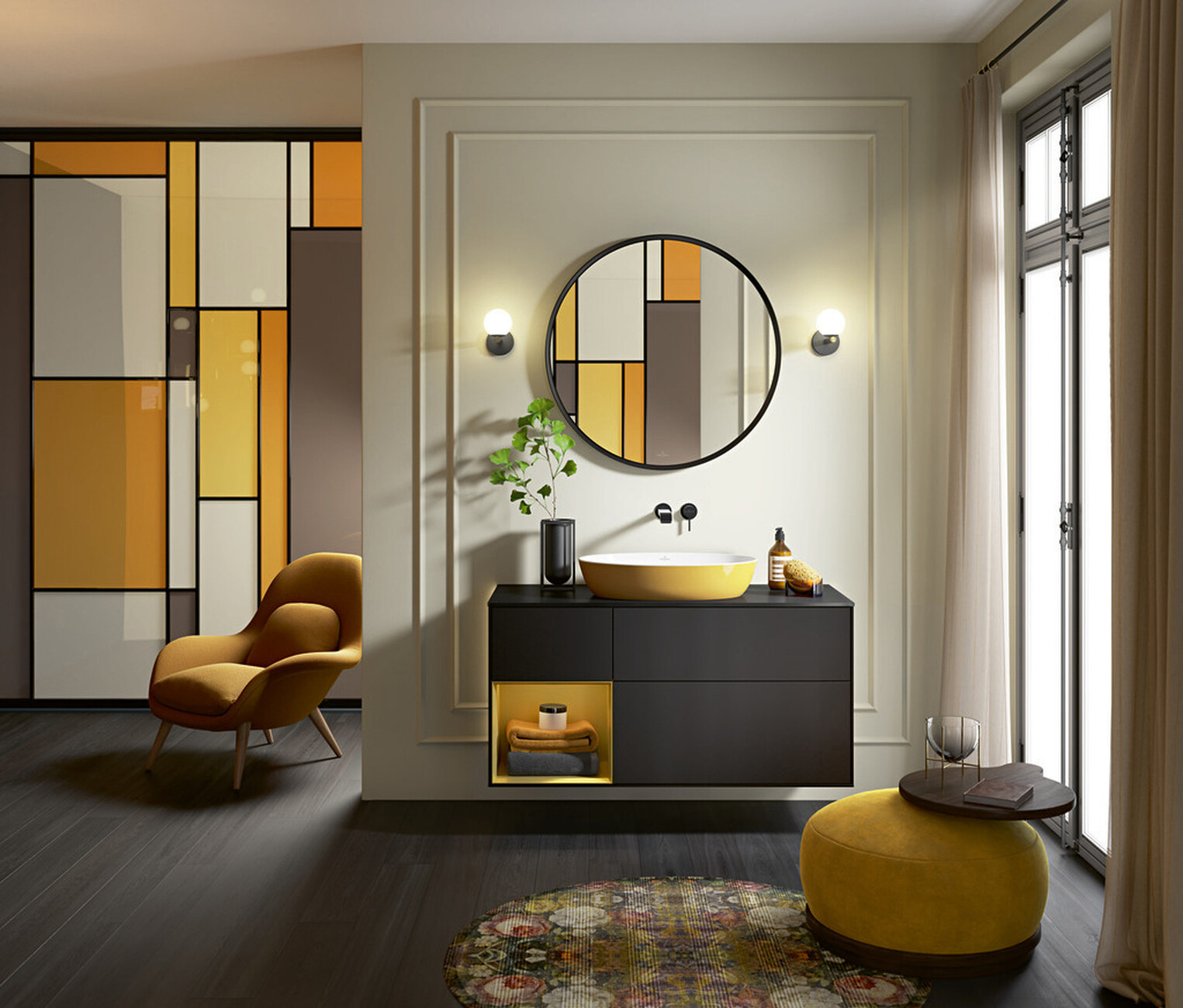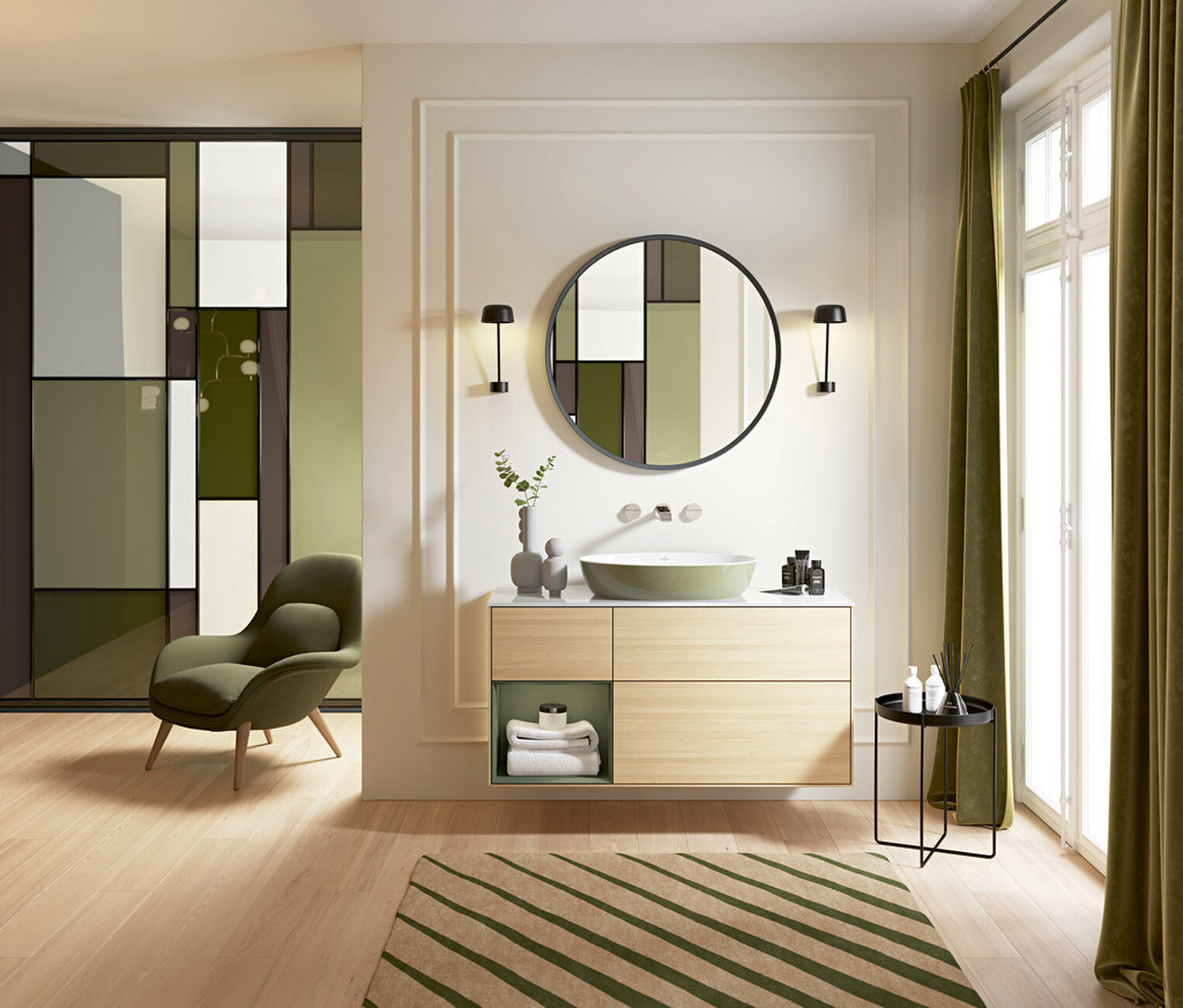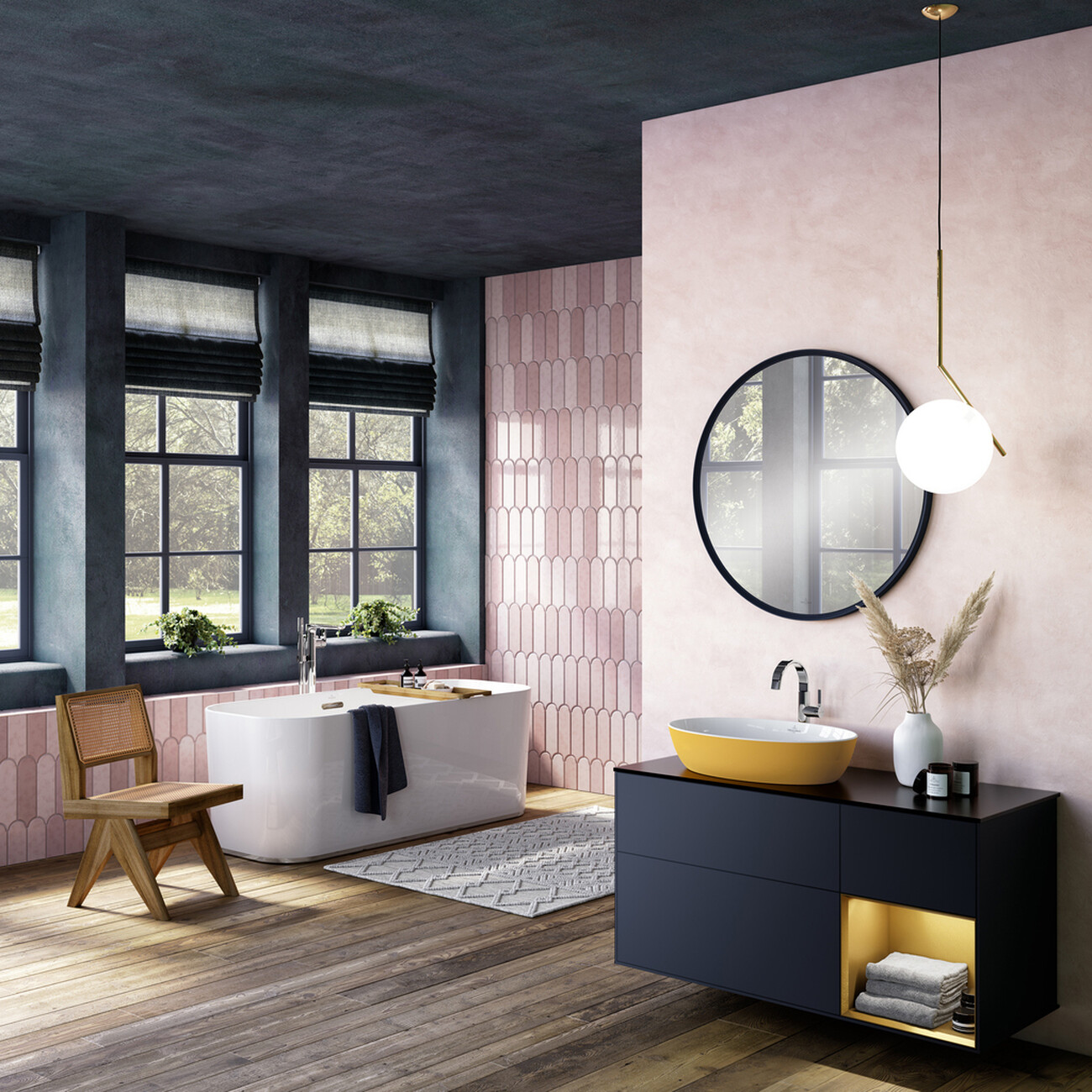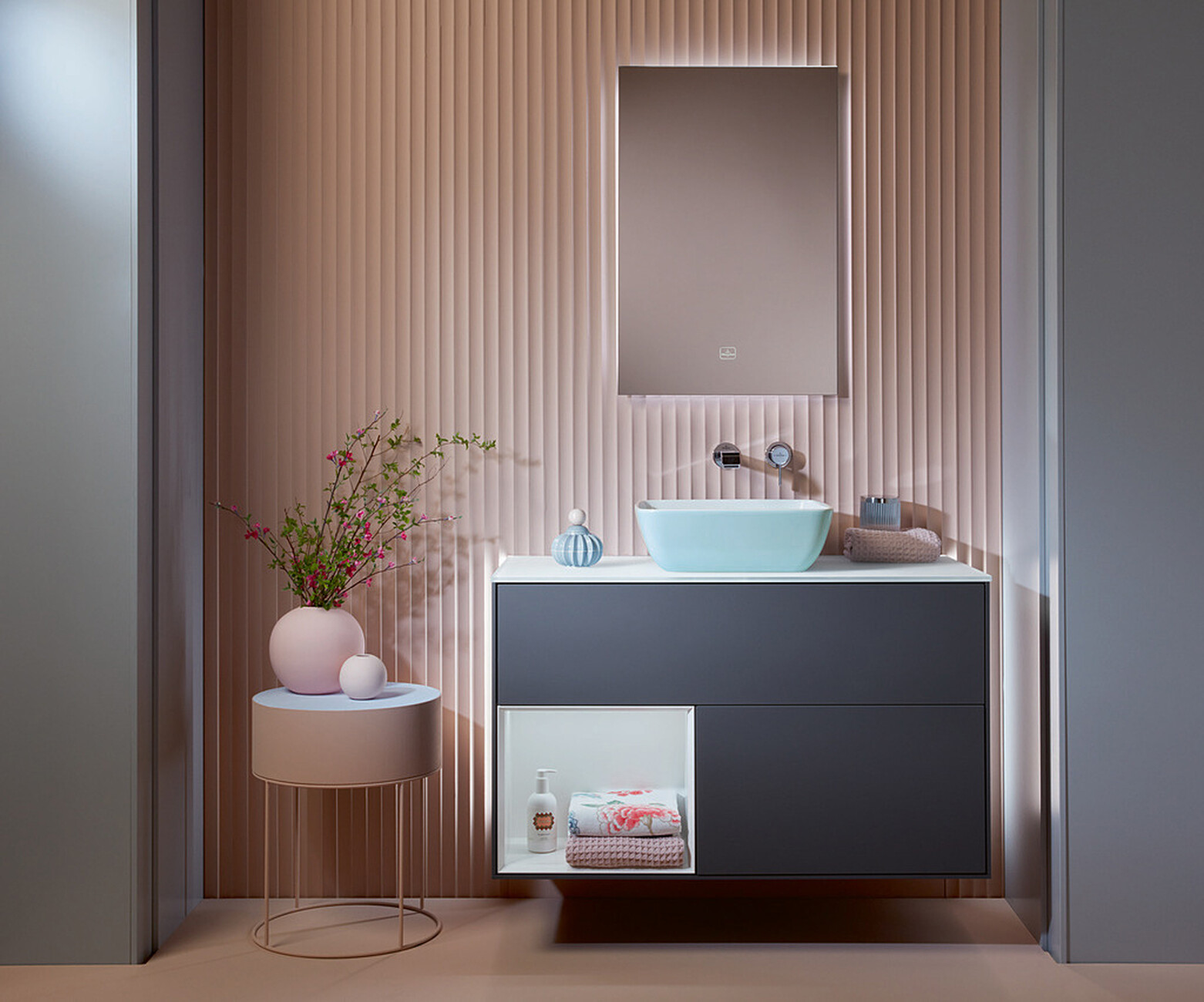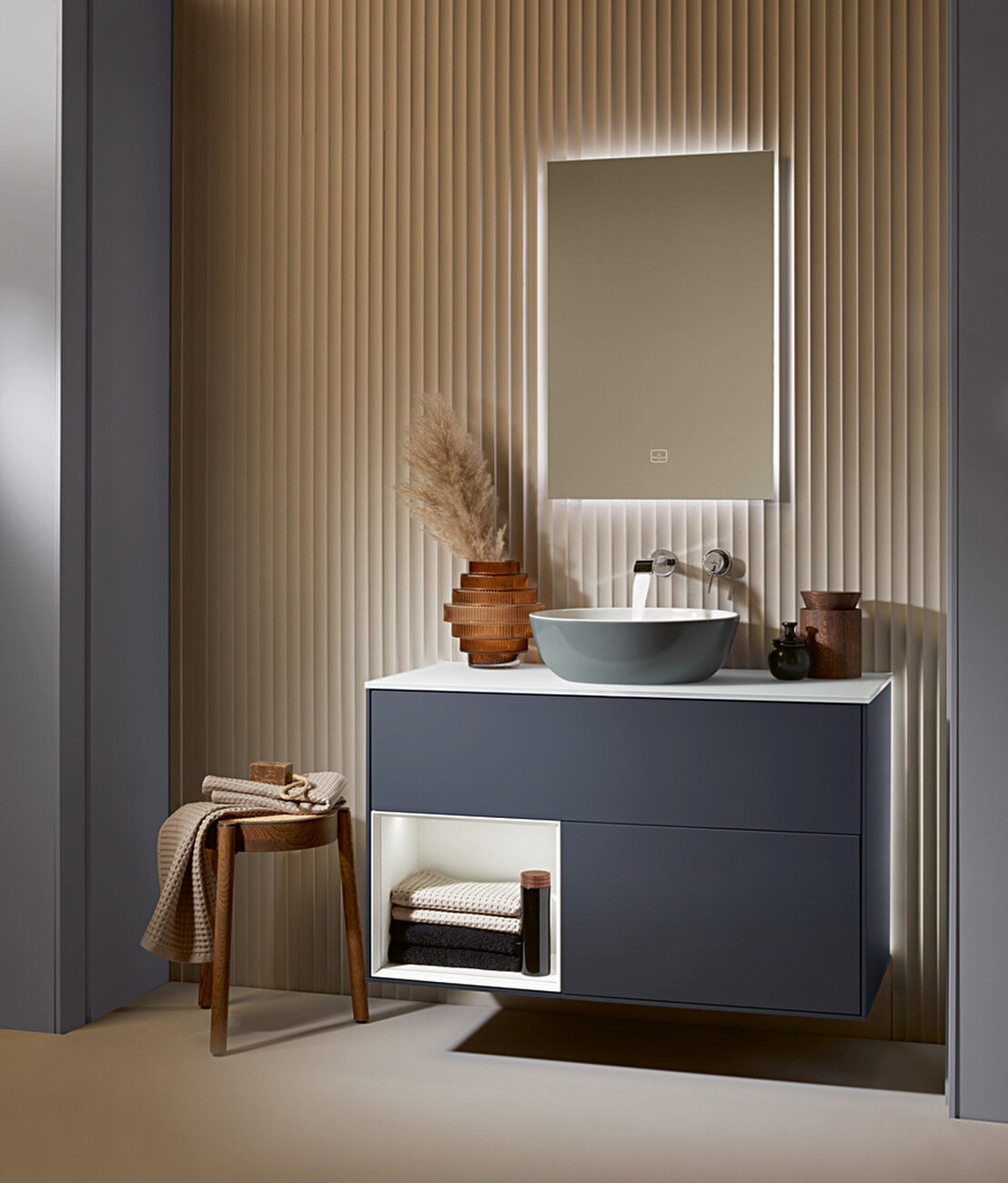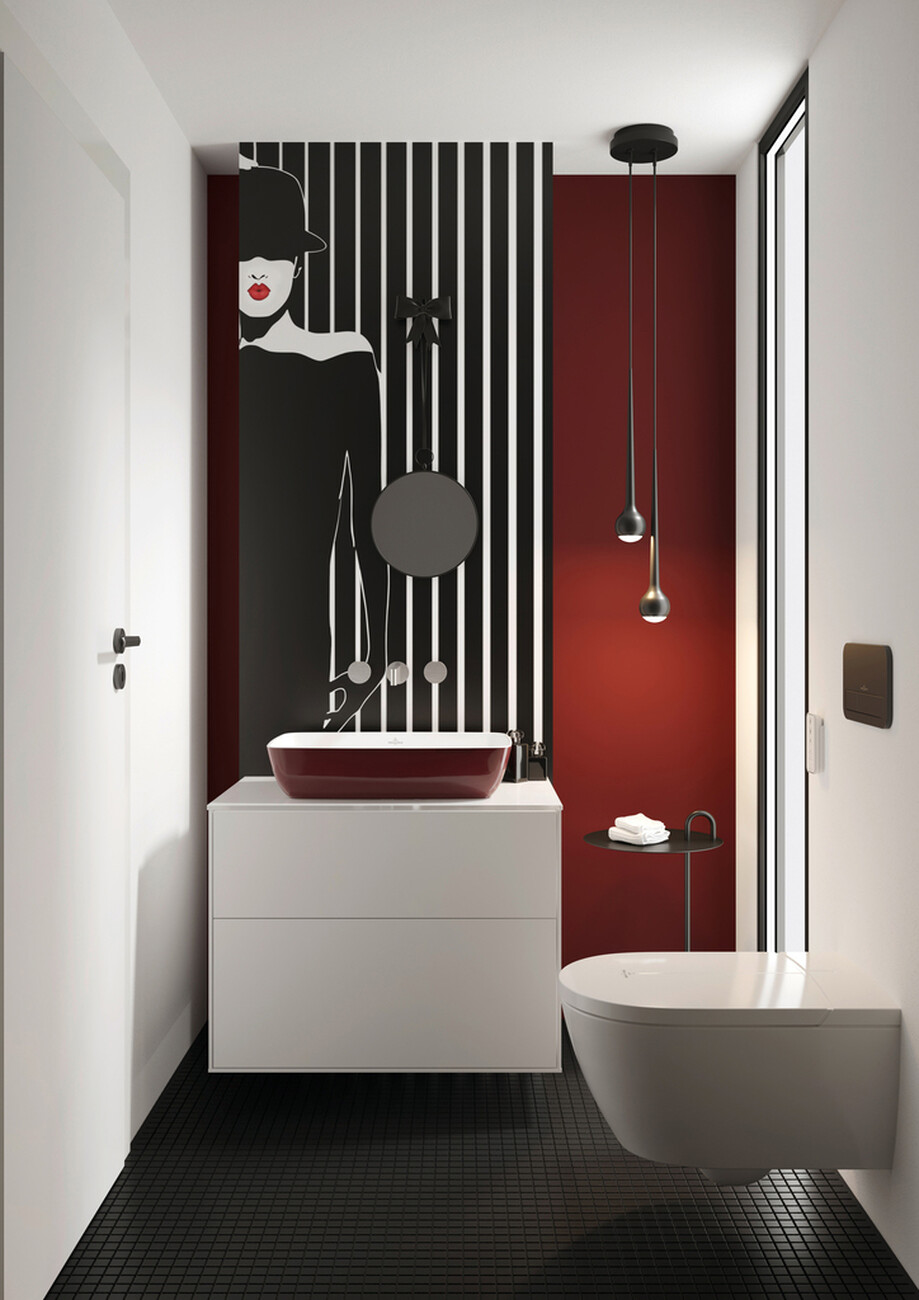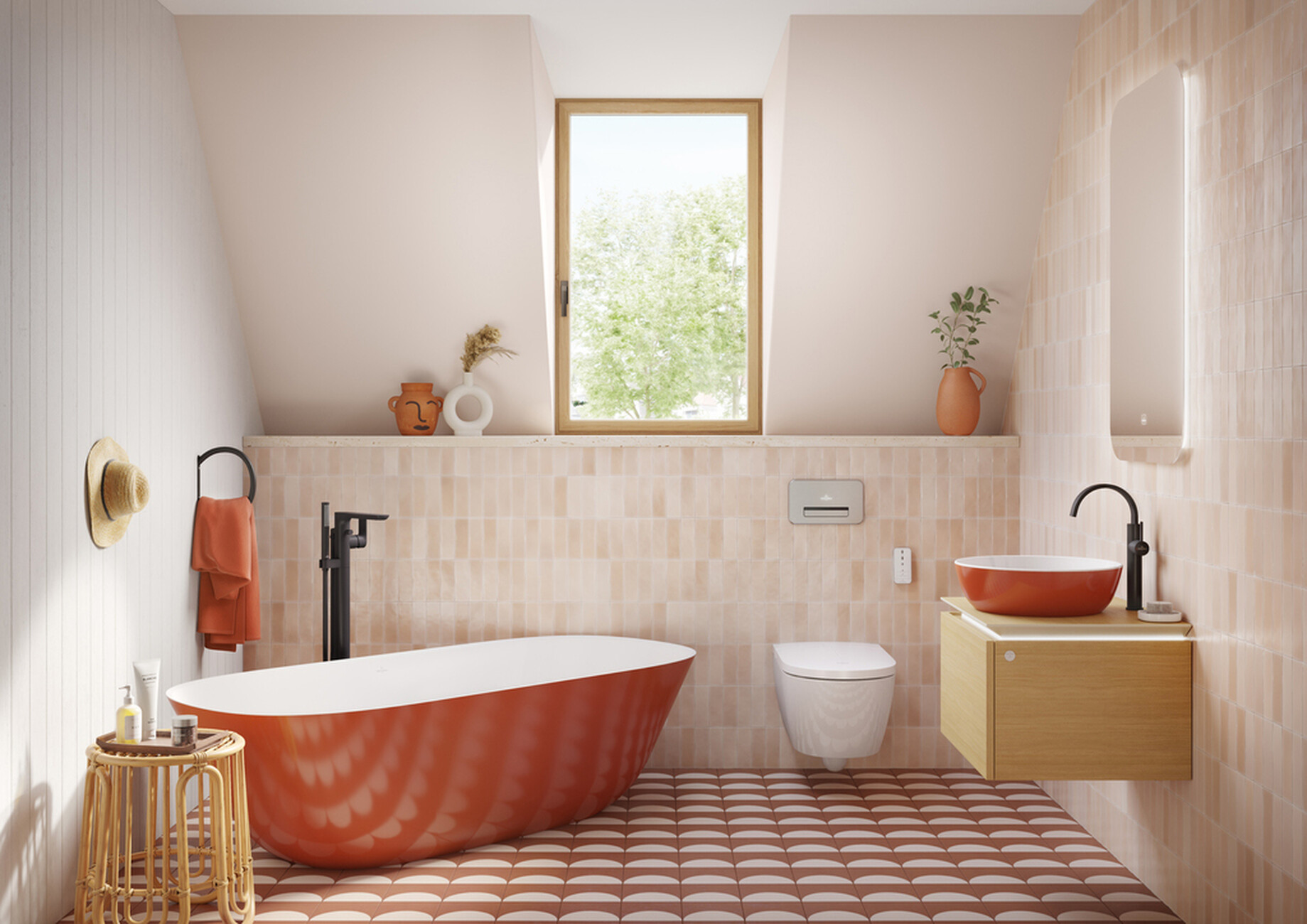Changing bathroom
Anna Moldenhauer: Gesa, what was the idea behind the colour concept for the "Artis" collection that you designed for Villeroy & Boch?
Gesa Hansen: I already worked a lot with colours during my training at the Bauhaus University in Weimar. Above all, Josef Albers' theory of colour is central to me, as it states that colours are actually always relative to the context in which they are placed. When you design an interior concept, white sanitary ceramics are basically disturbing for the overall picture. In addition, the interior design of bathrooms has become increasingly homely in recent years; for example, mainly the surfaces where splash protection is necessary have been tiled. The bathroom is now also visually part of the living space, an extreme transformation has taken place.
According to which concept did you choose the colours for "Artis"?
Gesa Hansen: I find that colours have a very pleasant effect in interior design, so I wanted to find combinations that everyone could recognise. The seasons are our strongest colour sensation - from the bright sun in summer to the red of the leaves in autumn. I also designed volume colours, so there are three gradations of each shade, from full colour to a washed out version. For the first part of the collection I chose very light pastels, for the second part deeper colours. Darkness can also mean security, because the contrast makes the whole thing exciting.
Were technical specifications also decisive for the elegant design of "Artis"?
Gesa Hansen: The process was indeed not easy, because many colours from the seventies, for example, may no longer be produced today due to their ingredients. If you now want to obtain similar colours, you basically have to develop a new technology for this. Moreover, the effect of the colour on the ceramic is crucial. We therefore experimented a lot and managed to develop the colours I had in mind for "Artis".
The "Artis" countertop washbasins are made by Villeroy & Boch from the material TitanCeram. Did this have an impact on your colour concept?
Gesa Hansen: Yes, because thanks to the ceramic material TitanCeram, washbasins with very thin walls can be formed. And these provide a perfect basis for working with colour.
What is the advantage of coloured sanitary ceramics in terms of spatial effect?
Gesa Hansen: Interior design is always an interplay between warm and cold materials. With colour, you immediately have many more words at your disposal in this language. If the overall concept is right, colour is not an obstacle in the bathroom either. It's about using colour in an intelligent way.
How would you like to develop the "Artis" collection with Villeroy&Boch over the next few years?
Gesa Hansen: I would like to increasingly expand the vocabulary of colours for the washbasins, every era has its own colours and there is still a lot of potential. The current, deeper tones, for example, are simply pleasant in this time of uncertainty. However, I would never develop gaudy fashion colours, all the colours in the "Artis" collection have to fit into the overall picture.
What would you wish for the further development of bathroom design?
Gesa Hansen: I would like the bathroom to continue to become more homely and at the same time we should take into account that this room also needs a certain amount of protection. The spatial boundaries should not be broken up too much.
